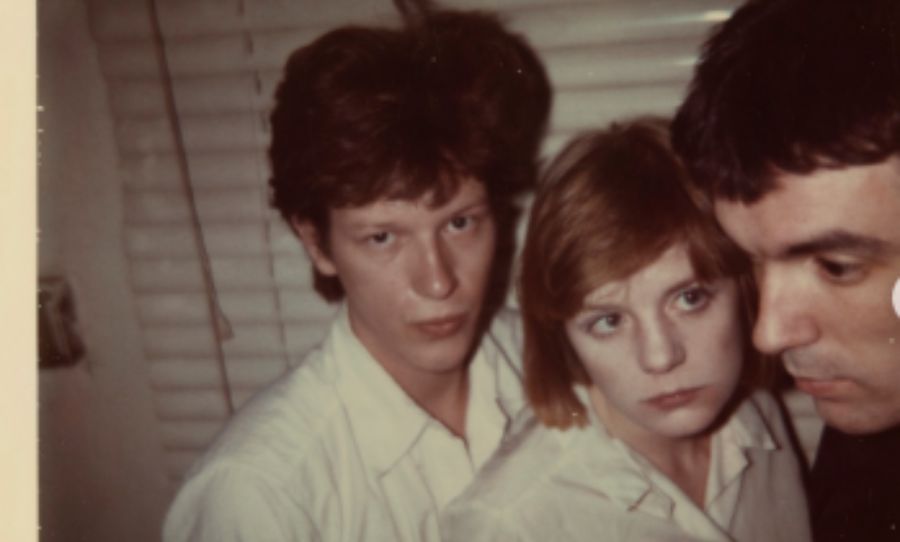Mullets. The haircut that refuses to die. It’s been mocked, revived, politicised, punkified, and platformed by everyone from Greek warriors to Gen Z TikTokers. But there’s one cultural current that’s consistently kept the mullet alive, whether ironically or in total seriousness: music.
From the sticky carpet of Aussie pubs to MTV’s glory days, the mullet has followed music through its many evolutions, often leading the charge. Like the zeitgeist of a band that ‘saves’ rock n’ roll (Amyl and The Sniffers, Wet Leg, Yard Act), the mullet comes and goes—but it always comes back harder, louder, and somehow cooler than before.

Let’s rewind a few millennia. The mullet, as absurd as it might seem, has ancient roots. Greek soldiers and Roman charioteers rocked short fronts and long backs for practical reasons: keep the hair out of your face in battle but leave the back long for warmth and style. It wasn’t called a mullet back then, obviously—Homer didn’t write that kind of poetry—but the blueprint was set. Form meets function, with a hint of flair.

Fast forward to 1980s Australia, where the mullet found fertile ground to truly flourish. It became a symbol of defiant working-class cool. Rural kids, rugby players, truckies, and pub rock fans all wore it with pride. You could mow the lawn in it, hit the RSL, and headbang at a Chisel gig all without changing your look. The mullet said, “I’m practical, but I also like to party.”
At the same time, across the Pacific, rock music was entering its hair metal era. And nothing said “excess” like a sculpted mullet teased three inches high. Metallica gave it a thrash edge. Bowie had already worn several versions of it in his chameleon-like evolution through the 70s and 80s. And then came Billy Ray Cyrus, with Achy Breaky Heart and a mullet so iconic it arguably eclipsed his actual music. His haircut was like a waterfall of Americana and bad decisions, cascading down his neck with unapologetic flair. It was country meets kitsch, and it burned itself into cultural memory.

But, as with all things that shine too brightly, the mullet fell from grace. By the late 90s, it was the punchline of every sitcom, the shorthand for bad taste, and the staple of “awkward family photos” calendars. Pop culture went through its ironic detachment phase and left the mullet behind. Bands once associated with the look cut their hair, donned leather jackets, or disappeared entirely. The mullet was no longer cool—it was cringe.
And then, somewhere around the late 2010s, something strange happened. The mullet came back. Quietly at first, on the fringes of indie and DIY scenes. Artists like Mac DeMarco brought it into lo-fi cool territory. It wasn’t polished, it wasn’t styled. It looked like he’d just crawled out of bed, thrown on a cap, and decided to cut his hair with kitchen scissors—and it worked. The mullet was raw, and so was the music. It became the antithesis of overproduced pop; a visual shorthand for the anti-aesthetic.
Meanwhile, over on TikTok, a new generation discovered the mullet—only this time, it came with ring lights, neon backgrounds, and hair transformation montages. Teens requested “soft mullets” and “modern mullets” at salons, blending the retro vibe with something sleek and fresh. And just like that, the mullet was cool again, with a new crowd and a new algorithm behind it.
Here in Australia, it was Courtney Barnet’s home cut mullet and then punk that really gave the mullet its teeth back. Bands like The Chats wore them like a badge of suburban chaos. Their music was fast, loud, unapologetic—and so were their haircuts. Amy Taylor from Amyl and the Sniffers weaponised hers on stage, whipping her head and screaming through sweat and eyeliner. It wasn’t a throwback. It wasn’t ironic. It was now. It was alive. The mullet, once again, had something to say.

And maybe that’s the secret to its survival. The mullet doesn’t care what you think. It’s not trying to be cool—it just is. When paired with music, it becomes a kind of amplifier. A visual middle finger. It’s business in the front, party in the back, but also rebellion in the roots. It can be worn with sincerity or sarcasm, and sometimes both at once.
Today, the mullet lives across genres and platforms. It’s in viral videos, on festival stages, behind DJ decks, and tucked under bike helmets in every corner of the country. From indie weirdos to punk powerhouses to mainstream pop provocateurs, the mullet has once again become a universal symbol of not giving a damn.
So here’s to the mullet. The haircut that refused to fade away. The style that can’t be tamed, trimmed, or forgotten. It’s survived empires, trends, mockery, and middle management—and come out stronger every time.
Long live the mullet. Keep it loud. Keep it loose. Keep it weird.



